Midge pupa, grubs & snails
{{start}}
Midge pupa and grub type flies can be fished in a number of ways however most hits seem to either be on the dead drift or on the lift. Also remember that if you are fishing to fish actively feeding on midges or midge type naturals speed and accuracy of casting is essential. Grubs on the other hand should be fished dead drift with no drag.
{{end}}

{{+1}}Epoxy midge – black with hot butt & UV cheeks{{-1}}
{{start}}
When Chironomids are around they tend to be around in large numbers and trout become quickly switched on and gorge on them. There are number of techniques to target chironomid feeders and one of my favourite is to fish three chironomid imitations with the heaviest on the point with a long leader on a floating line and fish relatively static. You will be surprised how many fish find your flies.{{end}}
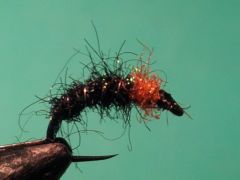
{{+1}}Tiger midge{{-1}}
{{start}}
This is a great dropper fly in lakes where there are populations of midge and my good mate Peter Walsh, who first came up with particular tie, fishes it with plenty of confidence and results. It's a lot like my Bibio variant except that the dominant colours are black and orange as apposed to back and red and it is tied without a front hackle.{{end}}

{{+1}}Mini pupa{{-1}}
{{start}}
When tiny pupa / nymphs are emerging they emerge in large numbers and fish often feed on them at the exclusion of all other offerings. The best technique is to cover rising fish. In this type of fishing casting speed and accuracy are as essential as an appropriate fly.{{end}}
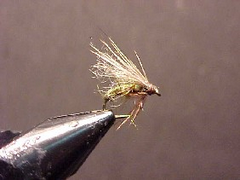
{{+1}}Sparkle caddis pupa{{-1}}
{{start}}
You can tell when trout are feeding on emerging caddis because you often see them porpoising out of the water in pursuit of the hatching insect. This sparkle caddis pupa is a good representation of that stage just before the insect sheds its shuck.{{end}}
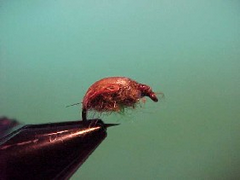
{{+1}}Snail{{-1}}
{{start}}
Snails are a food source for trout throughout the year. Having said that they are often overlooked by fly fishers. In colours imitating the naturals in the area to be fished they can be slowly twitched along the bottom or the weed beds with great results. They are also a good ambush fly for trout foraging the margins. My standard choice of colours is a mottled brown and olive dubbed body and a dark olive "scud back" shell.{{end}}
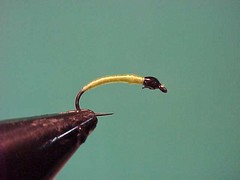
{{+1}}Willow grub{{-1}}
{{start}}
"Willow grubs" as they have become known, are often blown off the tree by the wind or simply fall off often finding themselves on the surface of the water where they are gorged on trout generally at the exclusion of all other passing tucker.{{end}}
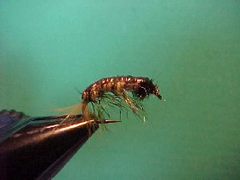
{{+1}}Scud{{-1}}
{{start}}
I use this fly to represent not only Scuds but also Olive Caddis Pupa which are of course a completely different types of creature. Scuds are true crustaceans of the family Isopod or Amphipods and generally you find them in shallow water in the detritus matter and around weed beds and drowned vegetation.{{end}}
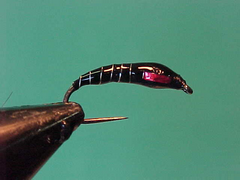
{{+1}}Epoxy midge – holographic cheek{{-1}}
{{start}}
When Chironomids are emerging they emerge in large numbers and there are plenty of choices for the fish. Casting speed and accuracy are as essential as an appropriate fly. When I asked the guys at Alpine to recommend their favorite chironomid pattern this is what they gave me.{{end}}
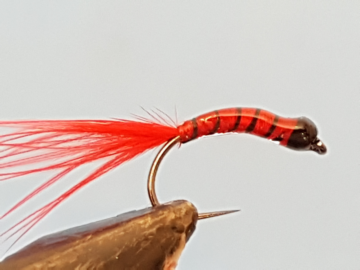
{{+1}}Bloodworm – Chatto’s TBH marabou bloodworm{{-1}}
{{start}}
A streamlined fast sinking fly that will anchor your team ... the UV mirage tinsel is just a fine line along the spine but is enough to ensure that the fly is seen at darker depths.{{end}}
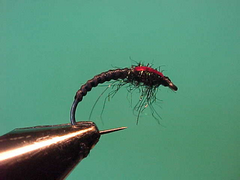
{{+1}}Anorexic midge{{-1}}
{{start}}
These little midges are easy to tie and appeal in a a whole range of situations. I like to fish them on a dry line with a longer leader either in a team of flies either static fishing or retrieving or as a single fly on a long leader to cover rising fish. They also work well as a river fly fished behind a heavier nymph.{{end}}













